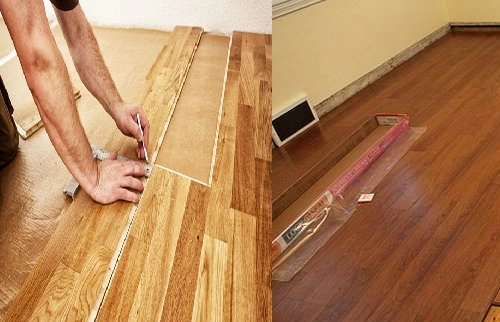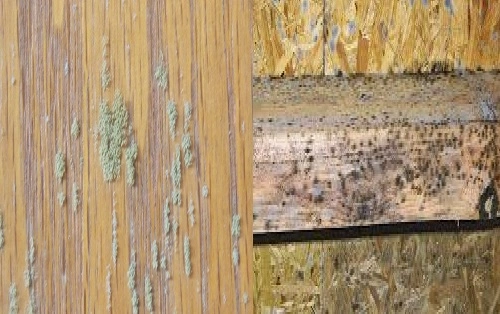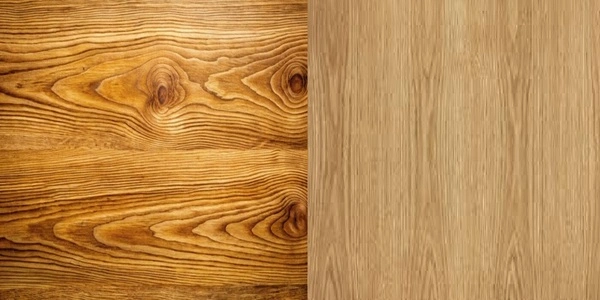Choosing the right type of flooring for your home can be a daunting task, especially when faced with popular options like engineered wood, solid hardwood, and laminate flooring. Each material offers unique advantages in terms of appearance, durability, cost, and maintenance, making it essential to weigh the pros and cons before deciding which one suits your lifestyle and budget.
In this article, we’ll provide an in-depth comparison of engineered wood flooring, hardwood flooring, and laminate flooring, helping you make an informed choice for your home.
What is Engineered Wood Flooring?
Engineered wood flooring consists of a real wood veneer (or thin top layer of hardwood) bonded to multiple layers of plywood or fiberboard. It combines the beauty of real hardwood with increased stability, making it a versatile option for modern homes.
What is Hardwood Flooring?
Hardwood flooring, also known as solid wood flooring, is made entirely from a single piece of natural hardwood like oak, maple, or walnut. It’s a timeless choice that provides unmatched beauty, durability, and value.
What is Laminate Flooring?
Laminate flooring is a synthetic product made from layers of high-density fiberboard, topped with a photographic image of wood grain and a clear wear layer for protection. It is designed to mimic the look of real wood at a fraction of the cost.
Key Comparisons: Engineered Wood vs. Hardwood vs. Laminate
| Feature | Engineered Wood | Hardwood | Laminate |
|---|---|---|---|
| Material | Real wood veneer over plywood/fiberboard | Solid hardwood throughout | Synthetic; image layer mimics wood |
| Appearance | Real wood look and feel | Natural and timeless beauty | Realistic but uniform wood visuals |
| Durability | Stable and resistant to warping | Extremely durable, can be refinished | Durable but prone to wear over time |
| Moisture Resistance | Moderate resistance | Prone to warping from moisture | Better moisture resistance |
| Maintenance | Low maintenance; occasional cleaning | Requires regular care and refinishing | Low maintenance; easy to clean |
| Installation | Click-lock or glue-down | Nail or glue-down only | DIY-friendly click-lock system |
| Cost | Mid-range | Most expensive | Most affordable |
| Lifespan | 20–40 years | 50+ years (refinishing possible) | 10–20 years |
| Environmental Impact | Often made with sustainable practices | Renewable but requires harvesting | Less eco-friendly; synthetic material |
1. Appearance and Aesthetics
- Engineered Wood Flooring: Engineered wood offers the authentic appearance of hardwood since the top layer is real wood. It is available in a variety of wood species, finishes, and plank sizes, making it an attractive choice for those seeking a natural aesthetic.
- Hardwood Flooring: Solid hardwood delivers unmatched natural beauty and character. Each plank showcases unique grain patterns, knots, and textures, creating a timeless and luxurious appearance that adds warmth to any room. Over time, hardwood can develop a charming patina that enhances its appeal.
- Laminate Flooring: Laminate mimics the look of wood using high-resolution printed images. Modern technology allows laminate to replicate wood grain patterns convincingly, but it still lacks the depth and natural variation of real wood.
Winner: Hardwood for timeless beauty and authenticity, followed closely by engineered wood.
2. Durability and Longevity
- Engineered Wood Flooring: Engineered wood is more dimensionally stable than solid hardwood due to its layered construction. It resists warping and expansion caused by humidity and temperature changes, making it ideal for basements and kitchens. It can last 20–40 years with proper care.
- Hardwood Flooring: Hardwood is extremely durable and can last 50–100 years or more when properly maintained. It can be sanded and refinished multiple times to restore its appearance, adding to its longevity. However, hardwood is susceptible to warping in humid environments.
- Laminate Flooring: Laminate is highly resistant to scratches, stains, and wear, making it ideal for high-traffic areas. However, its lifespan is limited to 10–20 years, and it cannot be refinished. Once the wear layer is damaged, the entire plank needs to be replaced.
Winner: Hardwood for long-term durability, while engineered wood offers better resistance to moisture.
3. Moisture Resistance
- Engineered Wood Flooring: Engineered wood has better moisture resistance than solid hardwood due to its plywood core. It performs well in areas with humidity changes but is not completely waterproof.
- Hardwood Flooring: Hardwood is vulnerable to moisture and can warp, swell, or crack when exposed to standing water or high humidity. It is not recommended for basements, kitchens, or bathrooms.
- Laminate Flooring: Laminate has better moisture resistance than hardwood but is still not waterproof. Prolonged exposure to water can cause swelling or delamination of the fiberboard core. Some modern laminates feature water-resistant technology for added protection.
Winner: Engineered Wood for moderate moisture resistance, with Laminate as a close second.
4. Maintenance
- Engineered Wood Flooring: Engineered wood is low maintenance and only requires sweeping and occasional cleaning with wood-safe products. Its wear layer can be lightly sanded in some cases.
- Hardwood Flooring: Hardwood requires regular care, including sweeping, occasional polishing, and refinishing every few years to maintain its beauty. It is more susceptible to scratches and dents.
- Laminate Flooring: Laminate is easy to clean with regular sweeping and damp mopping. It resists scratches and stains but cannot be repaired or refinished if damaged.
Winner: Laminate Flooring for low maintenance.
5. Cost
- Engineered Wood Flooring: Engineered wood falls in the mid-range price category, costing between $4 to $10 per square foot, depending on quality.
- Hardwood Flooring: Hardwood is the most expensive option, ranging from $8 to $15 per square foot, depending on wood species and installation.
- Laminate Flooring: Laminate is the most affordable option, with prices ranging from $1 to $5 per square foot, making it ideal for budget-conscious homeowners.
Winner: Laminate Flooring for affordability.
6. Environmental Impact
- Engineered Wood Flooring: Many engineered wood options use sustainably sourced materials and eco-friendly adhesives, making them a more sustainable choice.
- Hardwood Flooring: Solid wood is renewable, but its environmental impact depends on sourcing. Opt for FSC-certified hardwood to ensure sustainability.
- Laminate Flooring: Laminate is made from synthetic materials and is not biodegradable, making it less eco-friendly than wood options.
Winner: Engineered Wood for sustainability and efficient use of materials.
Final Verdict: Which is Right for You?
- Choose Engineered Wood Flooring If:
- You want the natural beauty of wood with added stability.
- You need a moderately moisture-resistant option for kitchens or basements.
- You’re looking for a mid-range price with long-term value.
- Choose Hardwood Flooring If:
- You want a timeless, luxurious floor that adds long-term value to your home.
- You’re willing to invest time and money into maintenance.
- Your home is in a dry, stable climate.
- Choose Laminate Flooring If:
- You’re on a budget and need an affordable, durable option.
- You prefer low-maintenance, easy-to-install flooring.
- You’re looking for a wood-like appearance for high-traffic areas.
Conclusion
All three flooring types—engineered wood, hardwood, and laminate—have their strengths and limitations. For those seeking a balance of durability, aesthetics, and cost, engineered wood offers the best of both worlds. Hardwood remains unmatched for its natural beauty and long-term value, while laminate provides an affordable, practical solution for homeowners on a budget.
By evaluating your priorities—whether it’s durability, moisture resistance, maintenance, or budget—you can choose the flooring option that enhances your home’s beauty and functionality for years to come.


